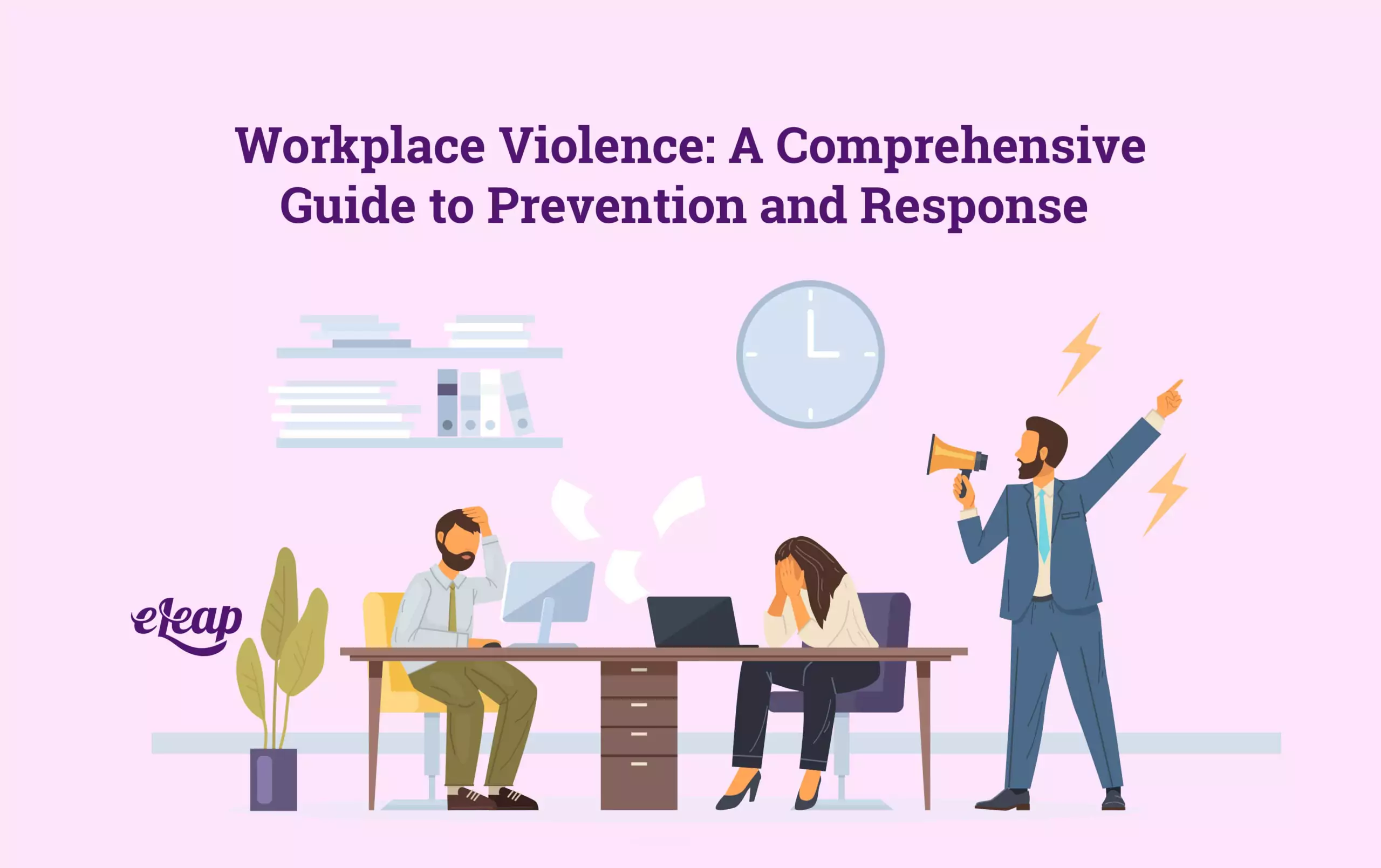The Crucial Function of Training and Understanding in Guaranteeing Reliable California Workplace Physical Violence Avoidance Programs
In the realm of office security and security, the relevance of applying durable violence prevention programs can not be overstated. By delving right into the intricacies of workplace physical violence risks, developing customized training programs, cultivating a society of caution, and developing clear reporting and response protocols, companies can reduce prospective dangers and protect their labor force.
Comprehending Office Physical Violence Threats
In examining work environment violence threats, it is critical to thoroughly examine the certain elements that add to prospective threats within the organizational environment. Understanding these dangers is paramount in establishing effective avoidance methods. One crucial variable to think about is the nature of the work itself. High-stress industries, such as healthcare and police, may have a greater danger of physical violence as a result of the mentally billed scenarios workers run into. Additionally, work environment dynamics, such as inadequate administration methods or insufficient dispute resolution mechanisms, can lead and escalate stress to fierce occurrences.
Furthermore, individual factors, such as previous history of violence or drug abuse issues, can likewise play a substantial role in enhancing the likelihood of office physical violence. It is essential for companies to perform comprehensive risk assessments that take into consideration these numerous aspects to produce a detailed prevention strategy. By determining and understanding the particular dangers present in the office, companies can proactively attend to potential dangers and develop a safer atmosphere for all employees.
Developing Staff Member Training Programs
Effective workplace physical violence avoidance programs need the advancement of comprehensive staff member training programs tailored to the particular risks and requirements of the company. These training programs ought to include different facets, consisting of identifying early indication of prospective violence, de-escalation methods, problem resolution strategies, and reporting procedures.
To begin, it is necessary to conduct an extensive risk assessment to recognize the unique vulnerabilities within the organization. This assessment needs to notify the web content and focus of the training programs, ensuring that staff members are outfitted with the expertise and abilities required to protect against and respond to possible risks efficiently.
Additionally, training sessions should be engaging and interactive to take full advantage of retention and application of the info given. Using real-life scenarios and simulations can assist staff members practice their reactions in a controlled environment, enhancing their readiness in the occasion of a crisis.
Routine support of training via refresher courses and updates is likewise essential to make certain that workers remain aggressive and cautious in maintaining a risk-free job setting. By buying well-designed and tailored training programs, organizations can empower their staff members to play an active function in protecting against workplace violence.
Promoting a Culture of Awareness

Secret to promoting a culture of understanding is leadership buy-in and commitment to prioritizing the security and wellness of all employees. Leaders ought to set the tone by constantly interacting the value of work environment security, supplying resources for training, and motivating open discussion concerning any kind of worries associated to work environment violence - california workplace violence prevention. Additionally, organizations can implement awareness campaigns, such as e-newsletters, posters, and workshops, to maintain the topic at the center of staff members' minds
Carrying Out Reporting and Feedback Procedures
To establish a robust framework for taking care of workplace physical violence occurrences, organizations need to create clear and reliable coverage and action procedures. Reporting procedures should describe how workers can report any type of actual or prospective violence, harassment, or endangering behavior. By pop over to these guys applying extensive reporting and reaction procedures, organizations demonstrate their dedication to keeping a secure and safe and secure workplace for all employees.
Evaluating Program Effectiveness
Evaluating look at here the effect and results of office physical violence prevention programs is important for companies to assess the efficiency of their campaigns and make notified decisions concerning program enhancements. Examination techniques need to concentrate on gauging the program's ability to stop and reduce cases of work environment physical violence, in addition to the overall performance of training and understanding initiatives. One method to assess program effectiveness is via examining incident records and trends before and after program execution. A reduction in the number of reported cases or a shift in the kinds of events taking place may suggest that the program is having a favorable impact.
In addition, conducting surveys or meetings with staff members can give valuable insights right into the regarded performance of the program and locations for improvement. Feedback from staff members that have gone through training or been associated with a workplace violence event can assist organizations determine staminas and weak points in their prevention initiatives - california workplace violence prevention. Routinely examining and updating program efficiency metrics based on assessment results is essential for keeping a reliable and aggressive office physical violence prevention program in California
Conclusion

Moreover, private elements, such as past background of physical violence or substance abuse issues, can also play a imp source substantial duty in enhancing the possibility of workplace physical violence. Leaders must set the tone by consistently connecting the value of workplace safety and security, supplying resources for training, and urging open discussion about any type of concerns connected to work environment physical violence.Examining the impact and end results of work environment physical violence prevention programs is important for organizations to gauge the performance of their initiatives and make educated decisions regarding program improvements. Routinely updating and reviewing program efficiency metrics based on evaluation outcomes is crucial for preserving a aggressive and efficient work environment physical violence prevention program in The golden state.
By understanding the dangers linked with workplace physical violence, creating training programs, promoting a culture of understanding, and regularly examining program effectiveness, companies can develop a safer work atmosphere for staff members.